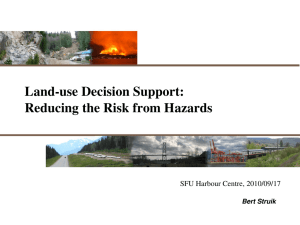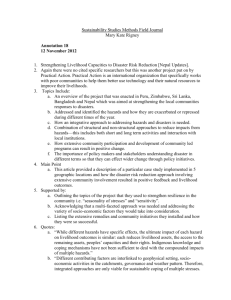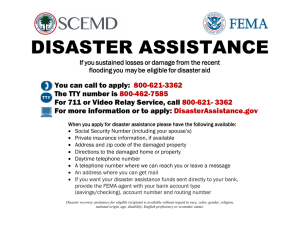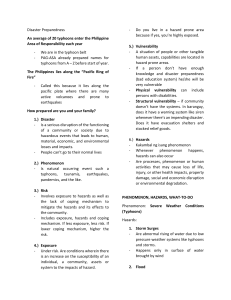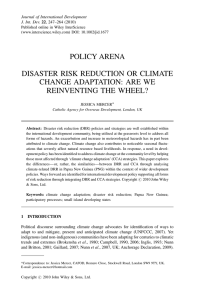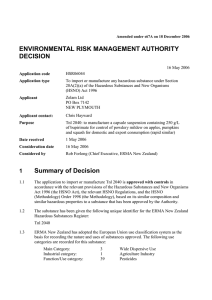Future Trends Series - GR:EEN Project
advertisement
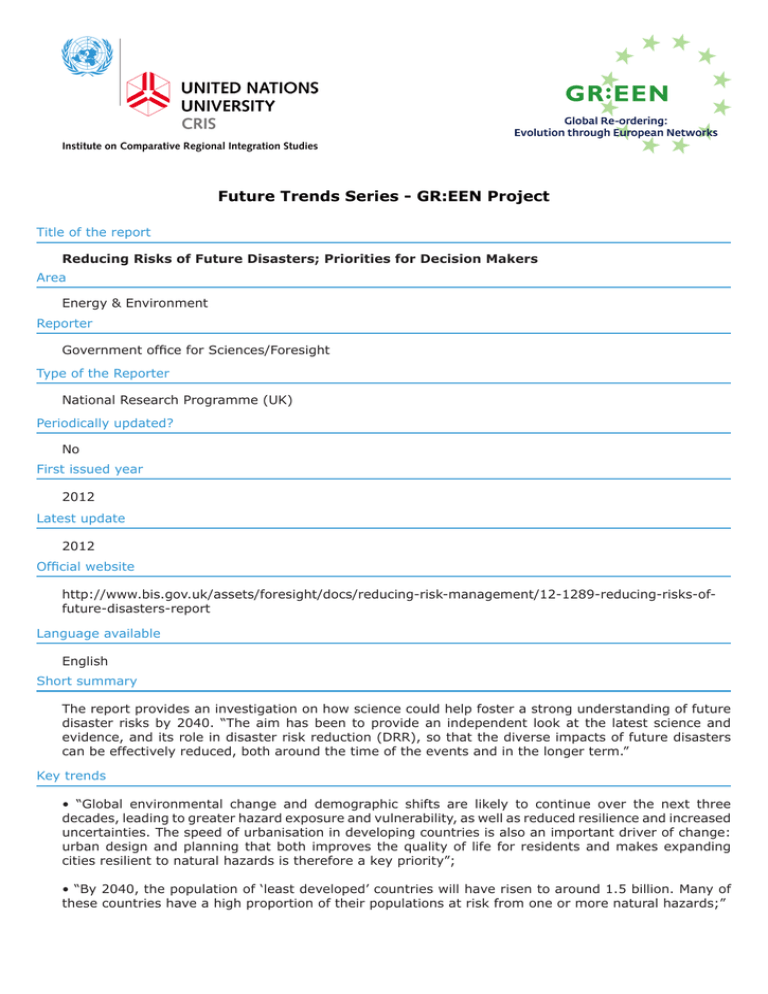
Future Trends Series - GR:EEN Project Title of the report Reducing Risks of Future Disasters; Priorities for Decision Makers Area Energy & Environment Reporter Government office for Sciences/Foresight Type of the Reporter National Research Programme (UK) Periodically updated? No First issued year 2012 Latest update 2012 Official website http://www.bis.gov.uk/assets/foresight/docs/reducing-risk-management/12-1289-reducing-risks-offuture-disasters-report Language available English Short summary The report provides an investigation on how science could help foster a strong understanding of future disaster risks by 2040. “The aim has been to provide an independent look at the latest science and evidence, and its role in disaster risk reduction (DRR), so that the diverse impacts of future disasters can be effectively reduced, both around the time of the events and in the longer term.” Key trends • “Global environmental change and demographic shifts are likely to continue over the next three decades, leading to greater hazard exposure and vulnerability, as well as reduced resilience and increased uncertainties. The speed of urbanisation in developing countries is also an important driver of change: urban design and planning that both improves the quality of life for residents and makes expanding cities resilient to natural hazards is therefore a key priority”; • “By 2040, the population of ‘least developed’ countries will have risen to around 1.5 billion. Many of these countries have a high proportion of their populations at risk from one or more natural hazards;” • “The speed of urbanisation in developing countries is also an important driver of change: urban design and planning that both improves the quality of life for residents and makes expanding cities resilient to natural hazards is therefore a key priority. The number of urban dwellers in developing countries is projected to increase linearly by 65 million each year from 2.6 billion in 2010 to around 4.7 billion in 2040”; • “Trends such as urbanisation, economic development and technological change present opportunities to reduce exposure an vulnerability, and strengthen resilience, if they are exploited effectively”; • “Some particular hazards have the potential to result in especially serious impacts in the future, for example: - Earthquakes in megacities pose a major threat, as does flooding for the many cities in low elevation coastal areas: 192 million more people will be living in urban coastal floodplains in Africa and Asia by 2060. - Preparing for earthquakes will be challenging as both their timing and severity are very difficult to forecast. - Dense, urban populations are at particularly high risk of emerging infectious diseases.” - The average maximum wind speed of cyclones in many developing countries is very likely to increase, along with the number of people living in at risk areas, particularly after 2040. Suggestions • “Policy makers are well placed to encourage a wide range of actions in others: clear signals that disaster risk is an important issue for government will help to incentivise the private sector and NGOs to also take fuller account of future disaster risk. ‘Investment grade’ policies and regulation can unlock investment and innovation”; • “Funders of DRR research and interventions can incentivise researchers and practitioners by giving priority to certain types of activity, and possibly even insisting on them as a condition of funding”; • “International bodies such as the United Nations also have key roles to play in incentivising cooperation between national and local organisations”; • “The private sector also has strong incentives to act on future disaster risk, which can directly improve business performance as well as demonstrating corporate social responsibility.” Methodology Research from primary sources and secondary sources and Modelling Reference to other trends reports? If yes, which reports? /
